World War One's forgotten Anzacs: The Indigenous Army
- Published
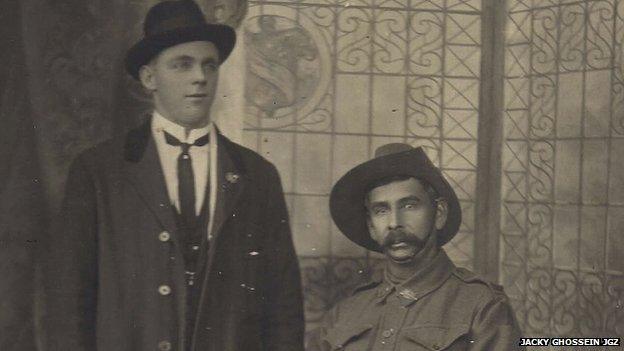
Robert and George Kirby fought in the war - but their efforts went unheralded
Anzac Day, 25 April, is probably Australia's most important national occasion. It marks the anniversary of the first campaign that led to major casualties for Australian and New Zealand forces during World War One, and commemorates all the conflicts that followed.
This year marks the centenary of that first bloody battle on the shores of Gallipoli and will be remembered across the country and in Turkey with special ceremonies and exhibitions. In the third feature in our series on Gallipoli, Saffron Howden for BBC News tells some of the stories of Indigenous Australian soldiers.

For nearly a century, a tin trunk in a bedroom in remote country New South Wales (NSW) held the official documents and medal testifying to Richard Norman Kirby's exceptional wartime feats.
The Australian soldier was celebrated quietly by his family - his portrait had pride of place in the lounge room of the family home - but the rest of the country knew nothing of his heroism on the battlefields of Gallipoli and France.
The dark-skinned, almost six-foot tall soldier from near Warren in central NSW first served on the Gallipoli peninsula, taking part in a battle that would go down in Australian history and folklore as a founding event for the fledgling nation.
He was then hospitalised for diarrhoea and typhoid before rejoining his battalion in France in mid-1916.
By the time he sustained a gunshot wound to the neck, he had been promoted to Lance Corporal.

Richard Kirby would not have disclosed his Indigenous origins, his great-great niece says
Not long before the war ended, at Rancourt in the Somme, Kirby rushed a machine gun post single-handedly and, although wounded, managed to hold two machine guns and 14 Germans at bay until his comrades joined him.
A few hours later, he threw his gun up over a trench, jumped up to follow it, and was shot through the head.
The young soldier died nine days later, on August 20, 1918, at the US Army General Hospital in France.
Despite being awarded a Distinguished Conduct Medal and a missive honouring his service being signed by King George V, there was a simple reason for Lance Corporal Kirby's anonymity: he was an Indigenous Australian.
"In the first World War, Indigenous people weren't really allowed to go to war," Kirby's great-great-niece, Sheila Day, told the BBC.
"He didn't look terribly Indigenous and he would not have disclosed the fact he was Indigenous," the 65-year-old says.
'Not supposed to serve'
Indigenous Australians have served in all major conflicts, from the Boer War to Afghanistan. But during World War One, Australia's Defence Act 1903 excluded people who were not substantially of European descent from enlisting.
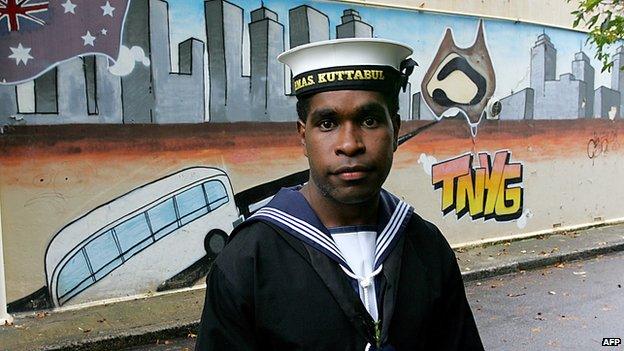
Indigenous Australians - such as this Aboriginal sailor - are no longer barred from serving
Some recruitment officers ignored the rule but Indigenous men also claimed some other racial identity, such as Maori, Pacific Islander or even Jewish to get around it.
Robert and George Kirby, the older brothers of "Uncle Dick", also served during the war, but like Richard, their efforts went unheralded.
"These three uncles, their names aren't on any war memorial anywhere," says Mrs Day.
It was only when her mother, aged 97, and aunt, 94, were moved to a nursing home, that the family granted Mrs Day permission to take Kirby's medals to the Australian War Memorial (AWM) in Canberra early last year, and the whole story came to light.
There are only four indigenous Australian men known to have received the Distinguished Conduct Medal, an award considered second only to the Victoria Cross. But while Kirby's exploits were exceptional, his lack of public recognition was not.
In the past few years research has uncovered the stories of a surprising number of Indigenous soldiers who took part in the Great War. The Australian War Memorial's first Indigenous liaison officer, Gary Oakley, says the list grows daily.
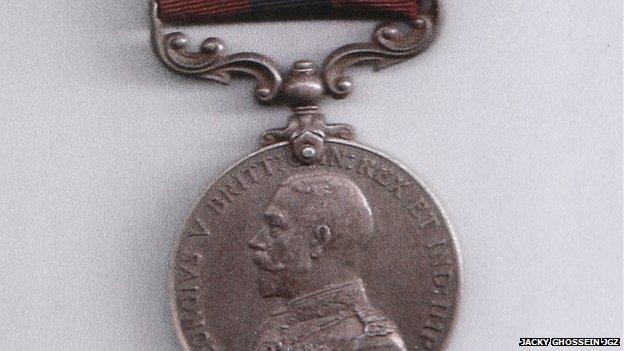
Only four Indigenous Australians have been known to receive the Distinguished Conduct Medal
"People ring up and say: 'Have you got my granddad on it?'" says Mr Oakley.
So far, about 800 Indigenous men who joined the uniformed defence forces for WW1 have been identified. Another 500 names are still being checked.
"Under the [Defence] Act at the time we weren't supposed to serve," explains Mr Oakley, a Gundungurra man originally from the Blue Mountains west of Sydney.
'Warrior spirit'
But many Indigenous men managed to enlist, attracted by the six shilling-a-day salary and moved by the wartime propaganda that made its way into the Aboriginal missions across the country.
Douglas Grant was one of them. He first enlisted in 1916, according to the State Library of NSW which holds his papers.
But he was discharged because his battalion was about to leave for war and government approval was required for Indigenous Australians to leave the country.
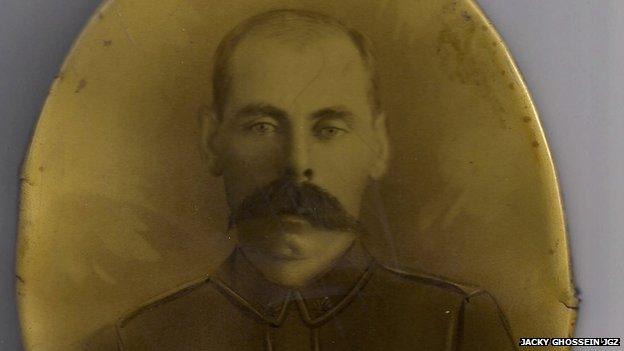
George Kirby came home battle-scarred - but may not have experienced much racism
The second time, he successfully left for France and was later captured by the Germans and sent to a prisoner-of-war camp for "soldiers of colour".
But some men never got past the enlistment officers. "We'll probably never know [how many]," says Mr Oakley.
The motivation for many may have been the hope that after serving in the war they would be treated better when they returned by the Australian government, and by white Australians.
"They had that warrior spirit and they wanted to prove themselves," he says.
Recognition at last
Those who did enlist achieved some equality fighting alongside their white compatriots for an empire that had dispossessed them. But they returned to an unchanged Australia, still divided along colour lines.
A new research project, Serving our Country, aims to compile a history of Aboriginal and Torres Strait Islanders. It has found that some of the men faced greater discrimination when they came home than before they left.
The government had removed their children during their absence or taken their land without any compensation, ironically to give to white soldiers under a soldier settlement program that did not include Indigenous servicemen.
It was not until 1949 that Australia's first peoples were legally allowed to join the defence forces.
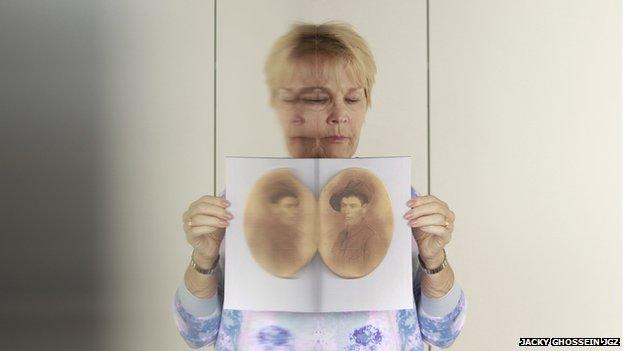
Sheila Day says her pride in her uncle outstrips any anger she feels
"So we fought two bloody world wars illegally," says Mr Oakley.
Despite this, in addition to the four Distinguished Conduct Medals, Indigenous soldiers were awarded up to 14 other military medals.
"Percentage-wise, we put a huge effort into the First World War," he says.
Mrs Day says the Kirby brothers, Robert and George, came home battle-scarred but would not have experienced the racism common for other Indigenous returned soldiers. There were simply not enough people where they came from.
"They lived way out in the bush," she says. "I know personally Indigenous people were excluded from entering RSL (Returned and Services League) clubs, they were excluded from Anzac marches."
But the pride in "Uncle Dick" outshines any anger that for so long his achievements were ignored by the rest of Australia.
"I'm just really pleased that after all this time he's been recognised," says Mrs Day. "Who do you take your anger out on? We can't. It's one of those things. It's a fact of life."
- Published9 April 2015
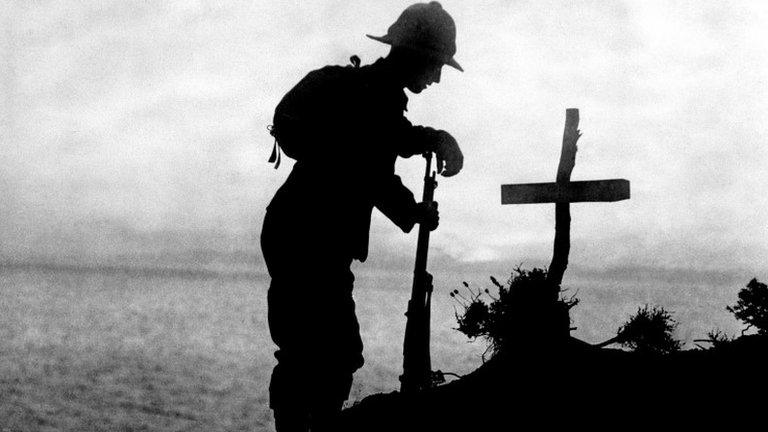
- Published23 March 2015
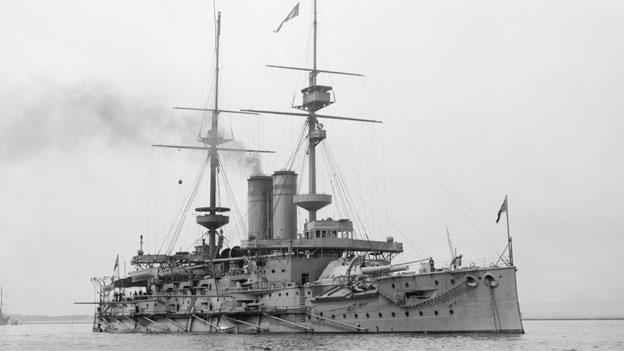
- Published12 March 2015
